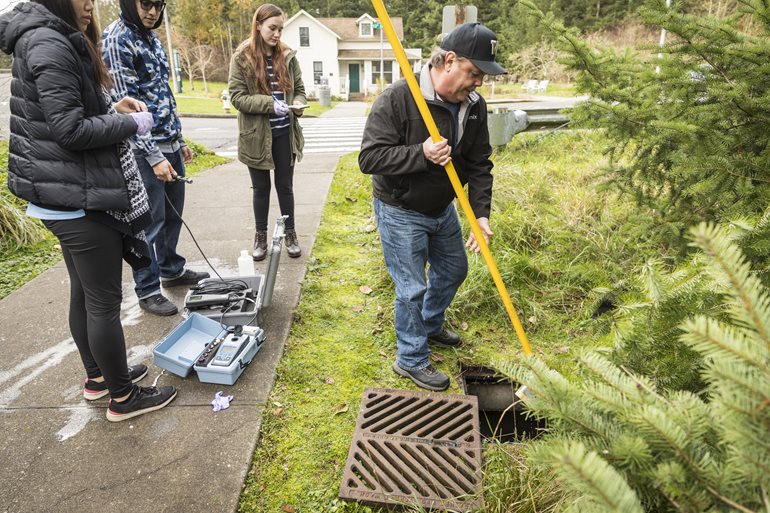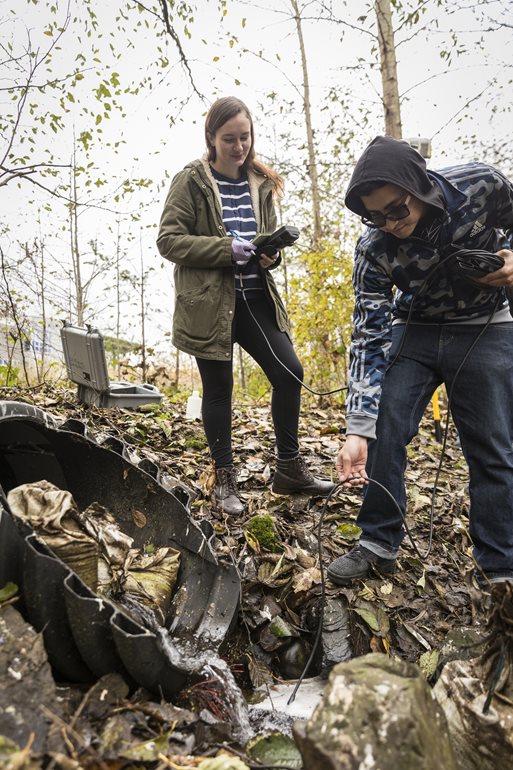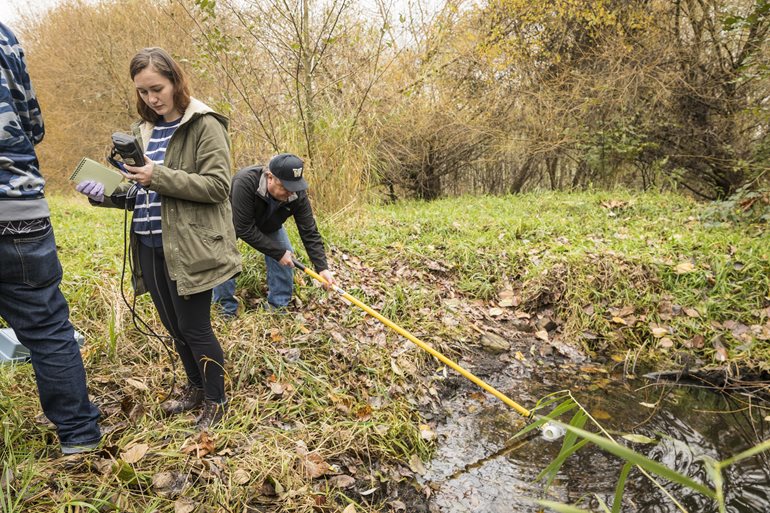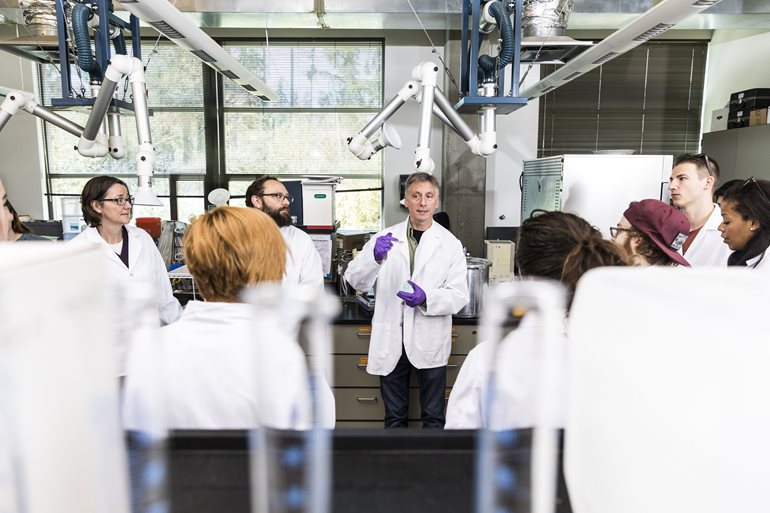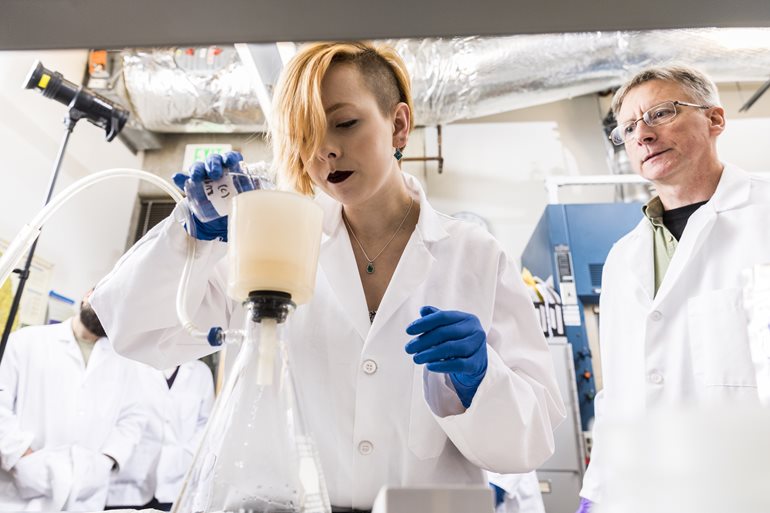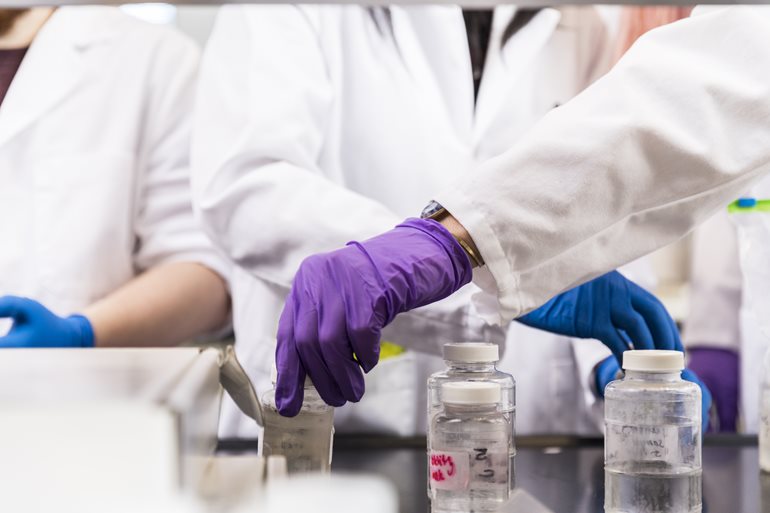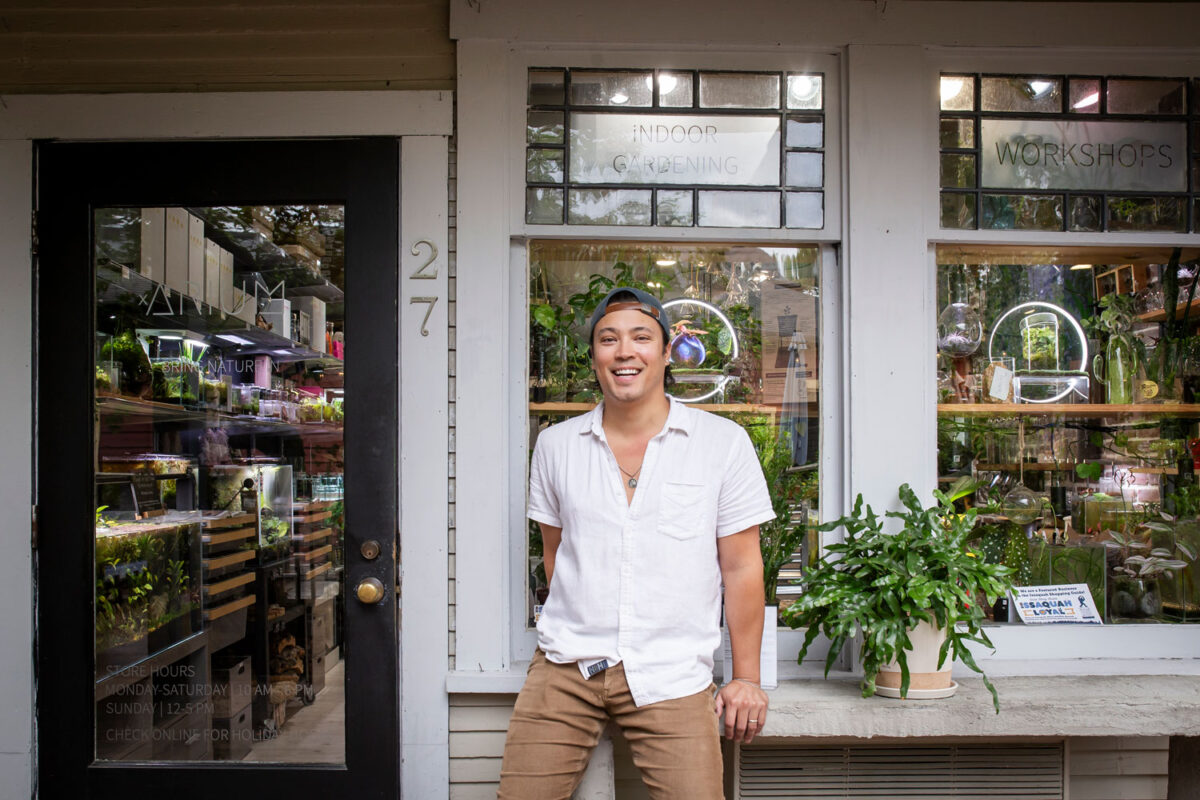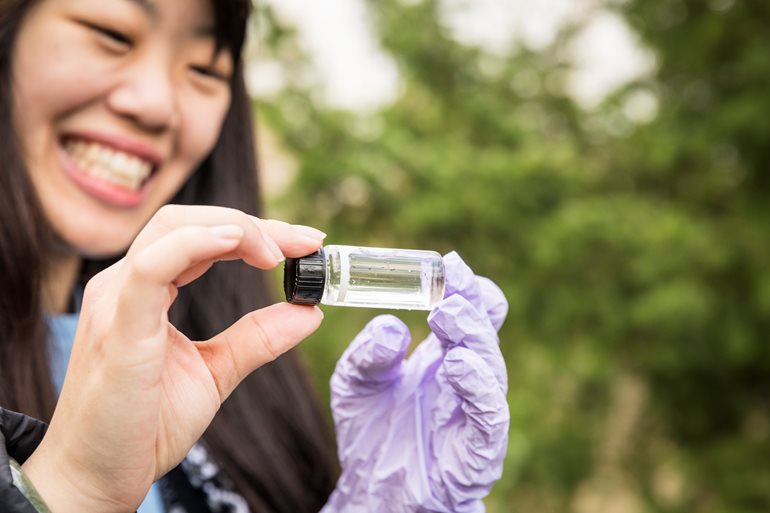
By Douglas Esser
For students in Rob Turner’s Environmental Monitoring Practicum, it’s just a matter of minutes between dipping water samples in the North Creek wetlands and testing their quality at a science lab in Commons Hall on the University of Washington Bothell campus. More than convenience, it connects fieldwork and analysis.
“There are a lot of times where you just get the data without knowing how to collect it, so this class really helps you understand where it comes from, what’s the proper technique to get it,” said Nina Tran (Environmental Science ’19).
Several teams of Turner’s students collected water for various tests. One team caught water as it flowed from storm drains through catch basins to the wetlands. Their samples would measure changes in dissolved oxygen, temperature, conductivity and turbidity (or water clarity) in the runoff system. Another team measured nitrates in bioswales — ditches with vegetation that buffer the wetlands. Others collected samples they would test for E.coli bacteria back in the lab.
As interesting as the results may be, the main lesson is attention to the process, said Turner, a senior lecturer in the School of Interdisciplinary Arts and Sciences. That includes careful record keeping, equipment calibration and sterilization of lab gear and sample bottles.
“You have to be rigorous in your methods to make sure you don’t mess up your samples and the quality of the data you generate,” Turner said.
Where the water flows
The 58-acre wetlands along North Creek were restored in the late 1990s when establishing the 132-acre campus, which was once part of the Truly-Boone farm. A preserve for native plants and animals, the wetlands are a living laboratory for faculty and students at UW Bothell.
On one sampling day in mid November, when a few yellow leaves hung in the branches and gnawed tree trunks showed where beavers had been busy, a group of students dubbed “Team Nitrate” probed for samples in the bioswales.
When rainwater flows, samples from different locations would indicate varying nitrogen levels, said Bee Elliott (Environmental Studies ’20). After a dry spell, the bioswales were empty or held stagnant water.
Guessing from the smell of the stagnant water, it would have a high nitrate level, said Allyn Rwamashongye (Environmental Science ’19).
Jordan Fette (Environmental Science ’19) said he had been “mucking around in the wetlands” for a few other classes and appreciated learning the techniques. “You get to go out there firsthand and use the equipment, use the sensors, see the changes and physically check it out,” he said.
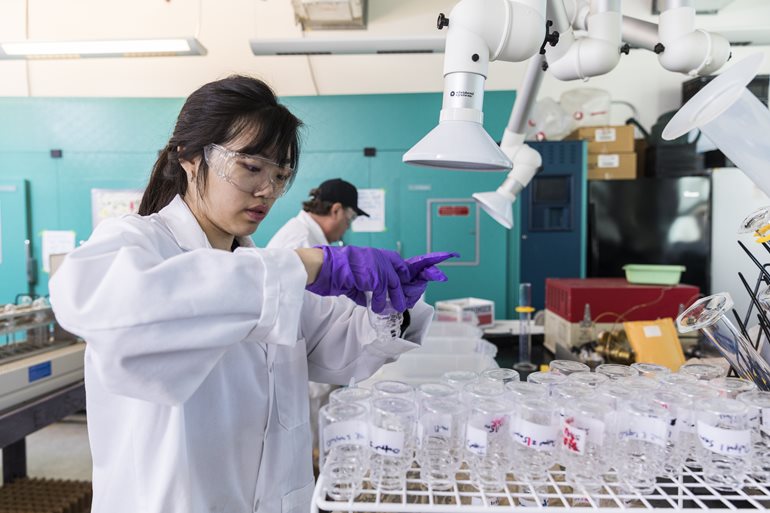
On another day back in the lab, UW2-231, students put on white lab coats, goggles and purple nitrile powder-free exam gloves to process samples for E.coli. This requires filtering water samples, incubating portions in petri dishes and counting the growing E.coli bacteria.
“You’re involved in every step of the experiment, and you know all the variables that are going into it — and things that could go wrong,” said Nicole Tim (Environmental Science ’19). “Someone just in the lab, they don’t necessarily know. If you get to see the whole continuum, I feel that’s really beneficial.”
Robert Young (Environmental Science, ’19) said he expects the real-world experience will help when he looks for a job in government or companies that study environmental impacts.
E.coli, common to the gut of any warm-blooded animal, serve as a proxy measurement for all pathogenic organisms that might come from feces, Turner said. No one has to look, or step, far for a possible source.
“We found pretty high E.coli counts, particularly within the roost zone for the crows,” Turner said. “They do a lot pooping on campus and particularly in the wetlands.”
